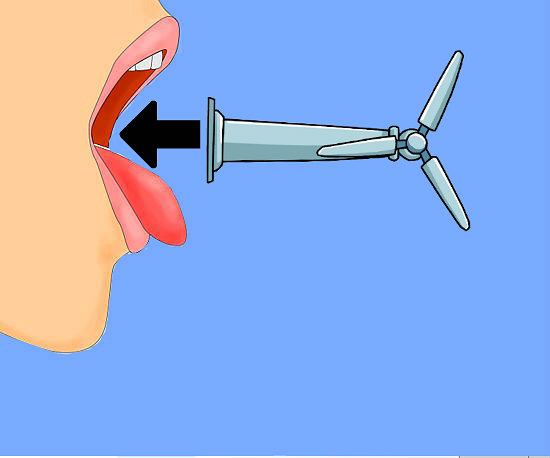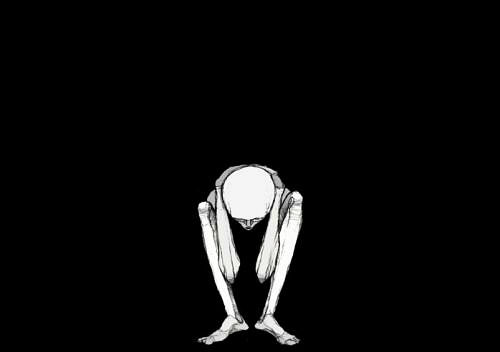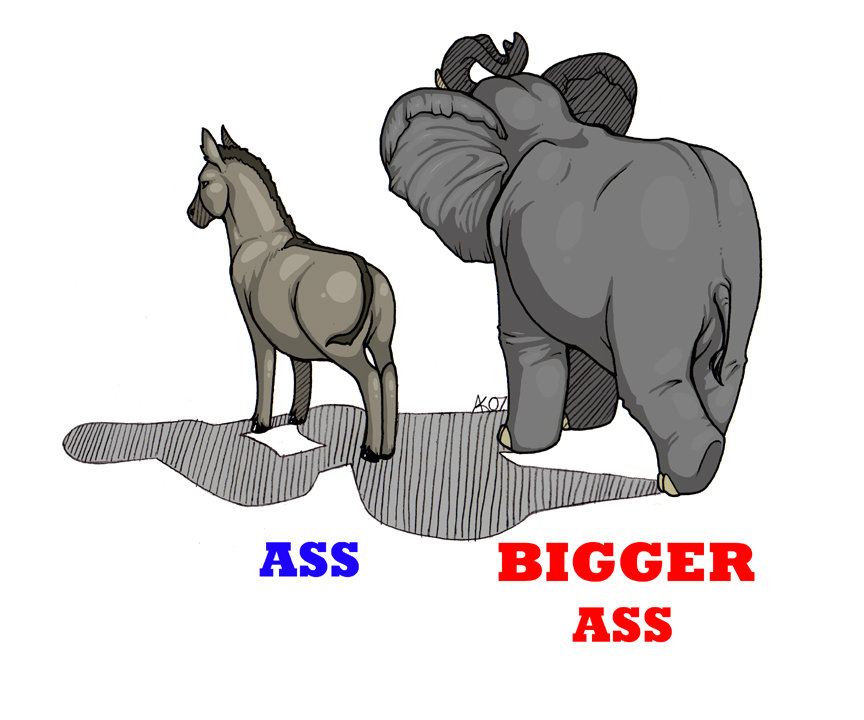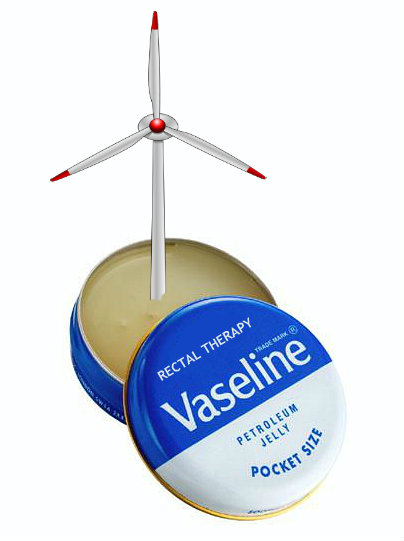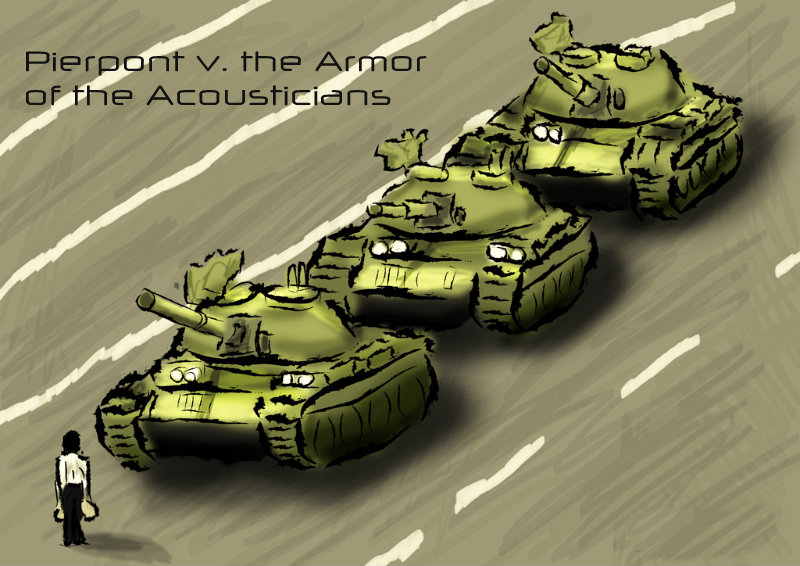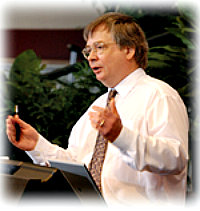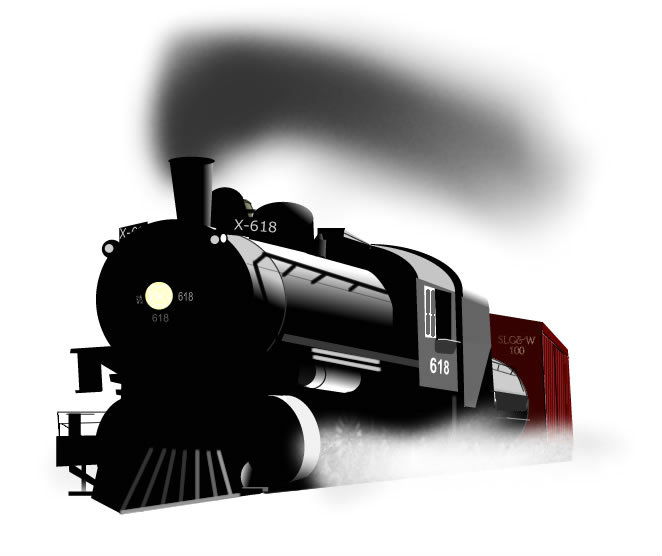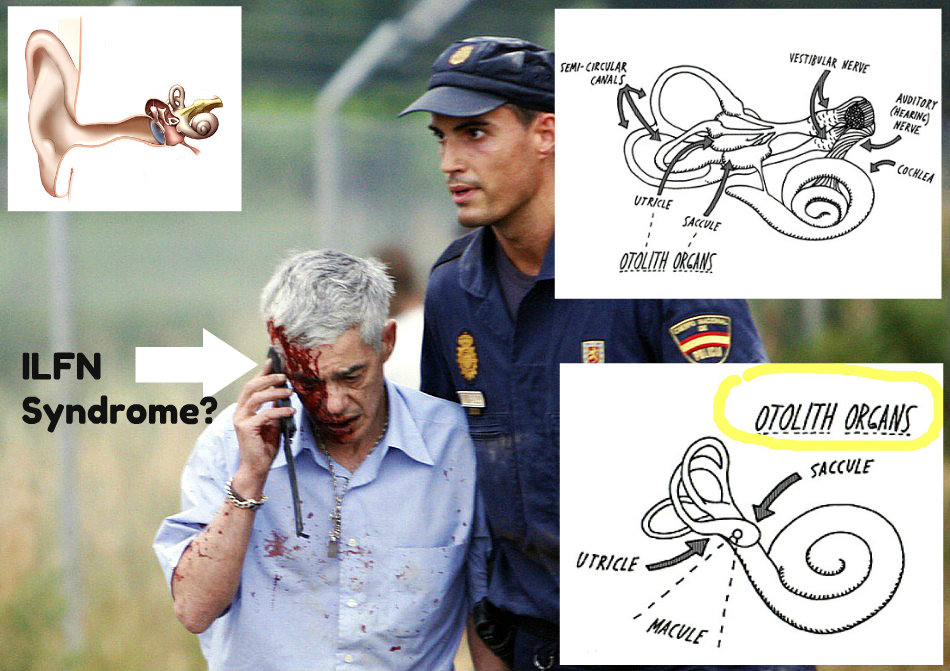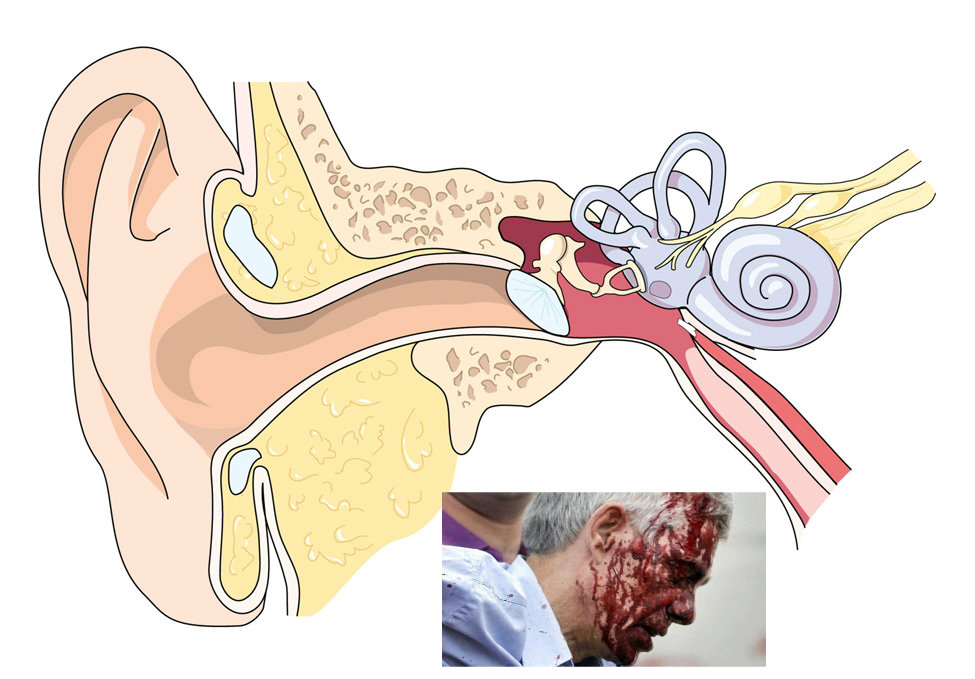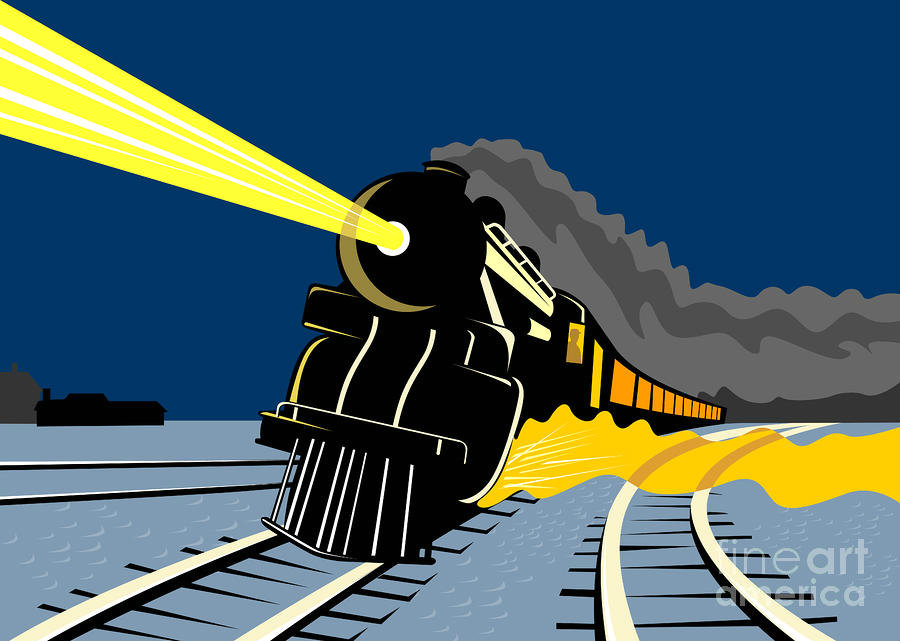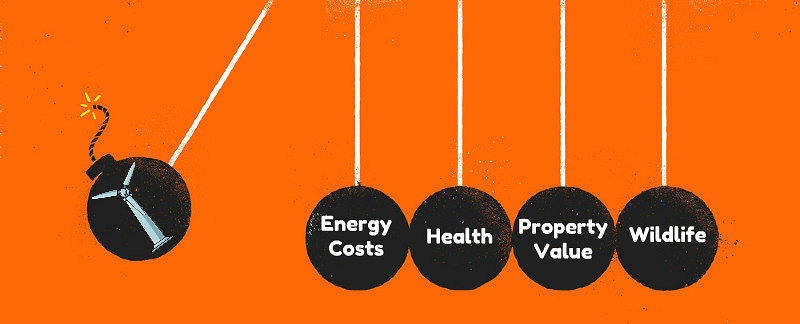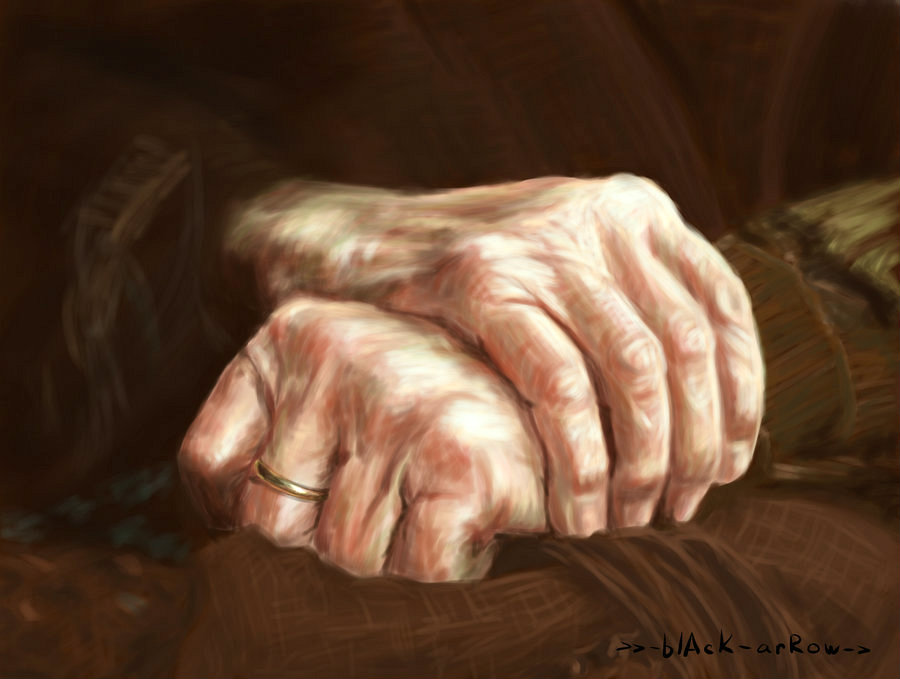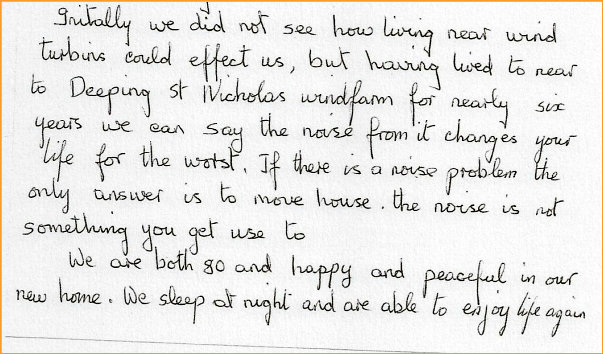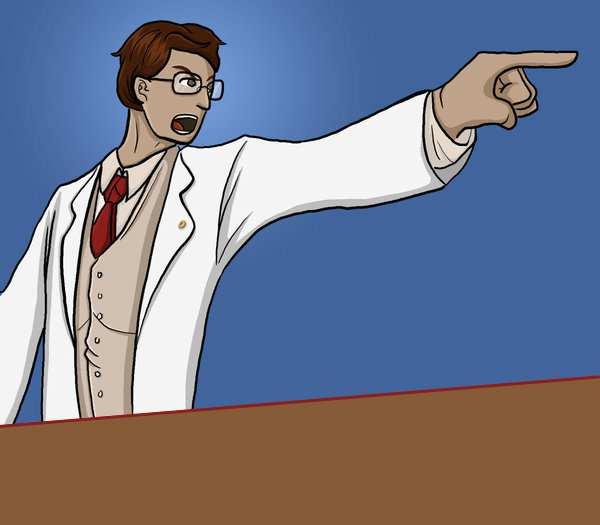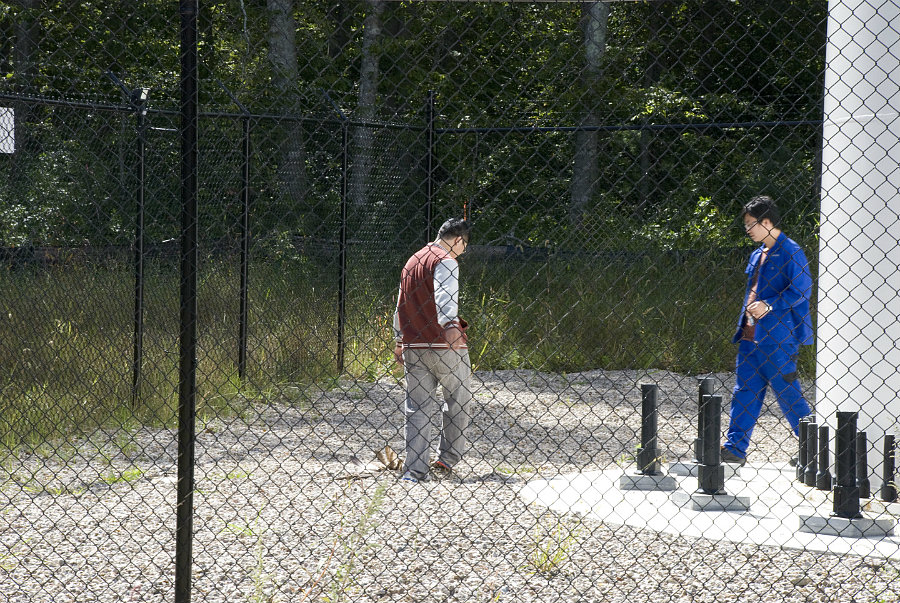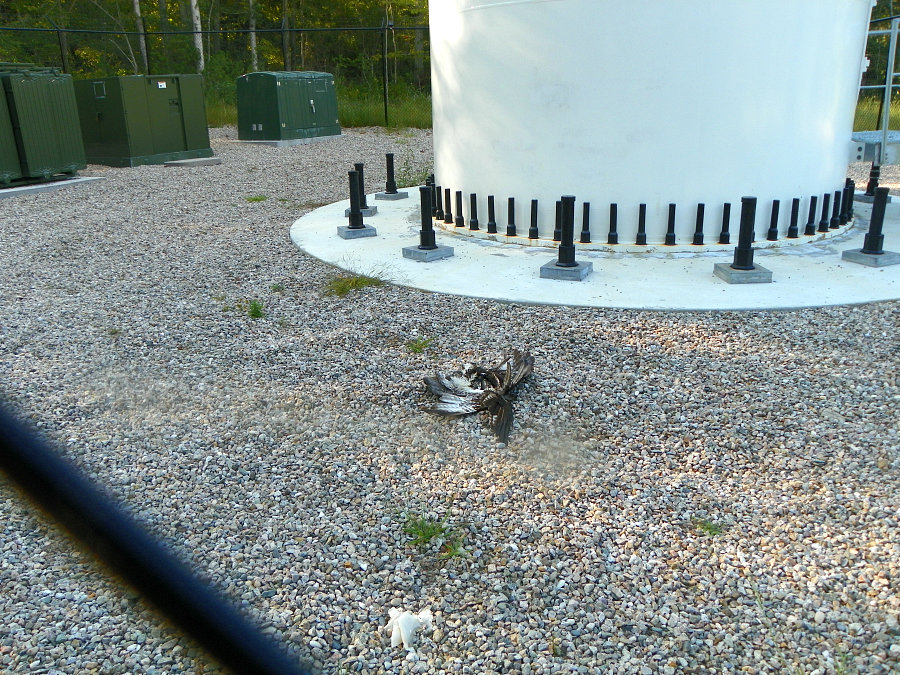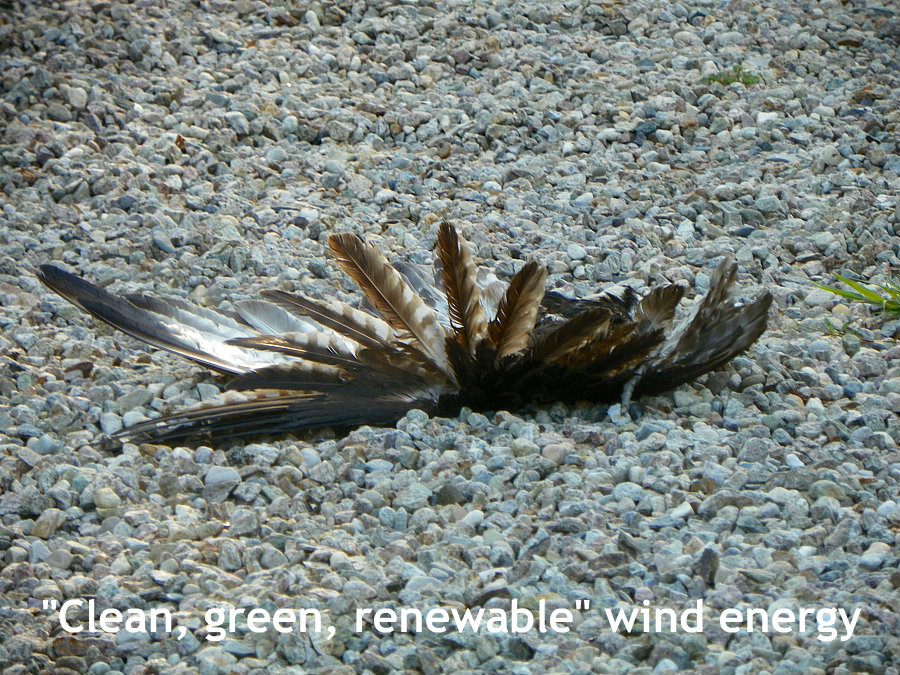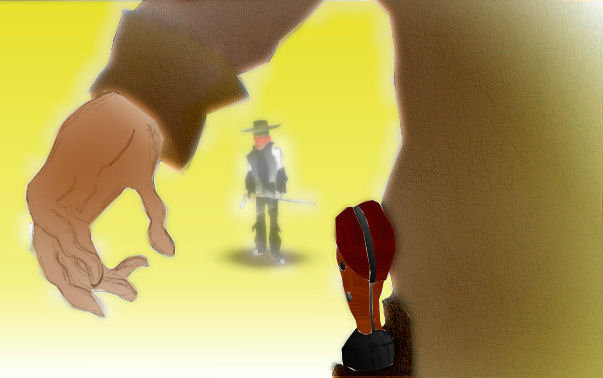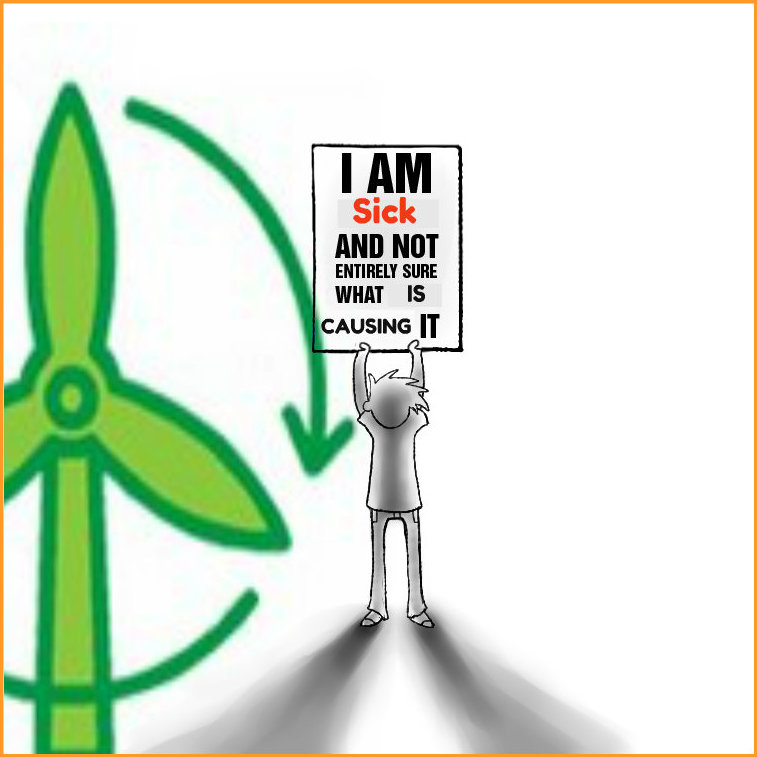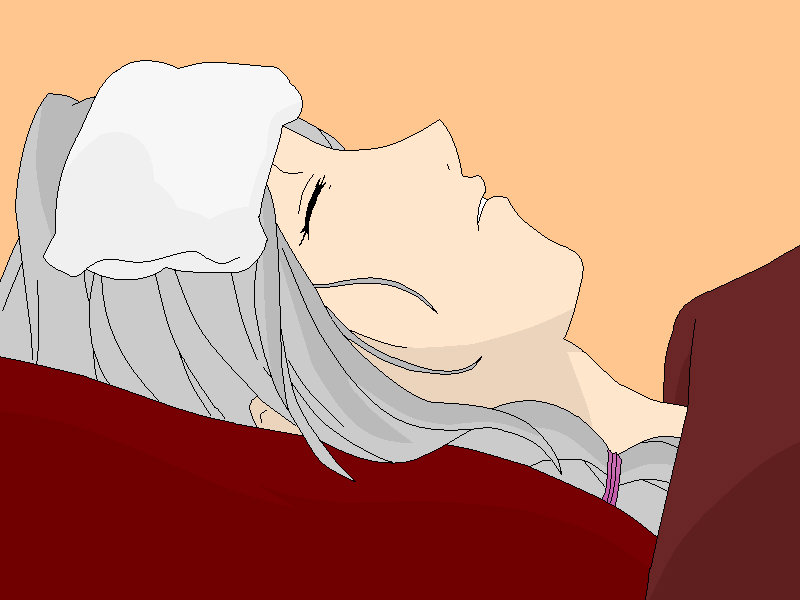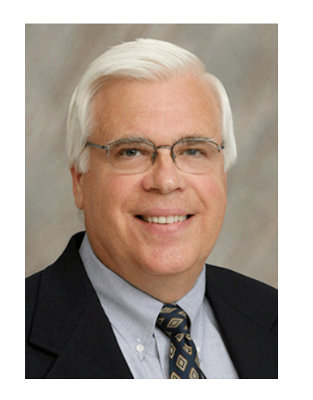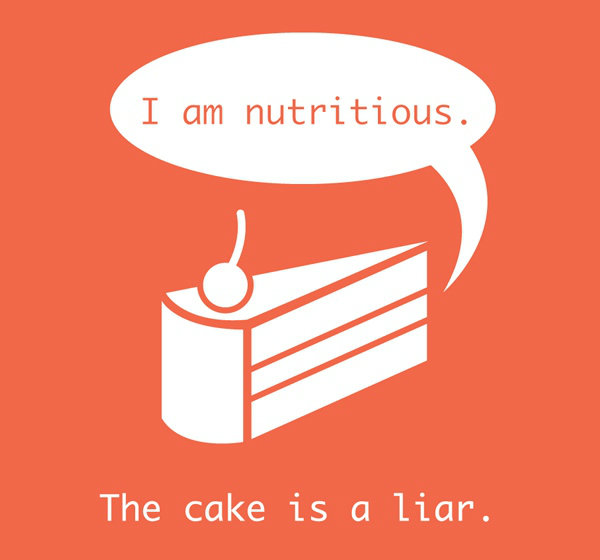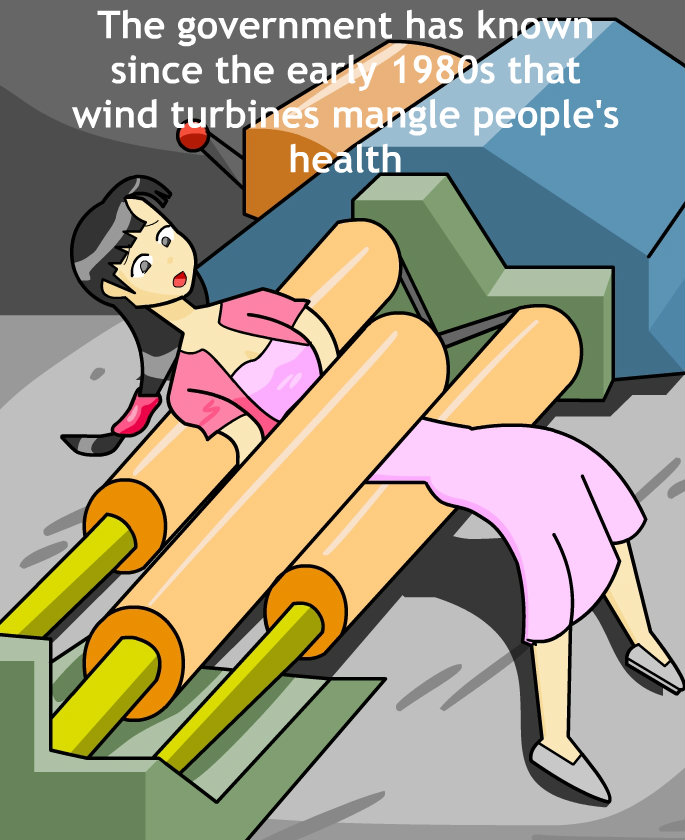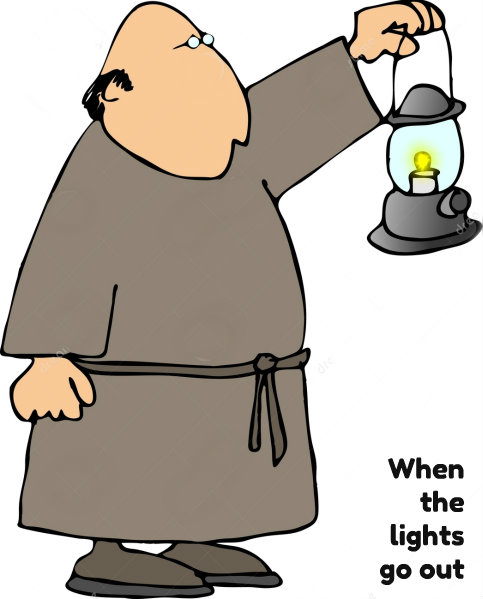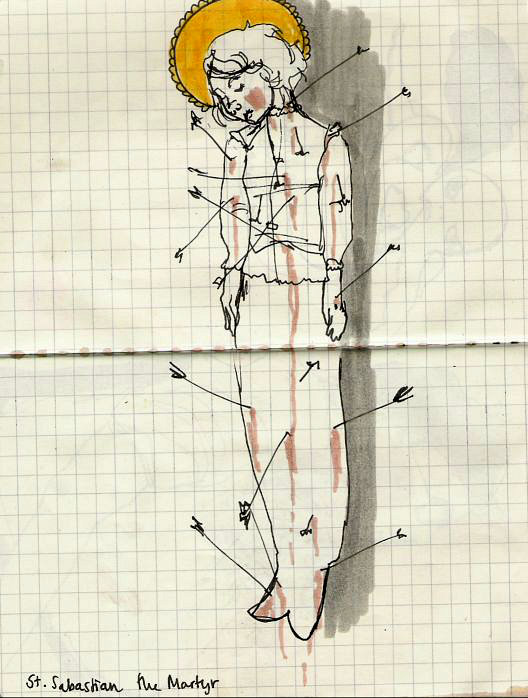
Editor’s note: The following was written by Eric Bibler (Connecticut) to Paul Schomer, PhD, a prominent noise engineer who has studied wind turbine noise and vibration.
Bibler wrote his letter to Schomer in response to Schomer’s failure to acknowledge Pierpont in his research into the health impacts of wind turbine noise.
We don’t need to understand the mechanism [of Wind Turbine Syndrome] in order to know the impacts, any more than Socrates needed to know how and why he would die if he drank hemlock in 399 B.C. He didn’t know how it worked, but he knew what would happen if he drank it.”
“Dr. Pierpont and Dr. Laurie are more full of arrows than St. Sebastian. You don’t have to canonize them as saints, but you should at least give them their due.”
.
From: Eric Bibler
To: Paul Schomer, PhD, Noise Engineer
Date: August 7, 2013
Regarding: Wind Turbine Syndrome
I hadn’t expected to weigh in on this discussion because I don’t feel particularly qualified to judge whose work should, or shoudn’t, have been cited in your recent paper, but now that comments have been offered by many people for whom I have the highest respect (Dr. Pierpont, Dr. Swinbanks, Dr. Laurie, Curt Devlin, George Kamperman, Eric Rosenbloom and others), I feel compelled to offer a few observations.
First, I would like to say that experience shows that the adverse impacts of wind turbines are devastating to both humans and wildlife — and that the adverse impacts to wildlife are by no means limited to the collisions of birds and bats with the wind towers and the rotors.
I didn’t know a wind turbine from a window fan until late 2009 when I stumbled on to a very pregnant proposal to install one (possibly three) 1.8 MW wind turbines in the heart of a national park, the Cape Cod National Seashore, in Wellfleet, MA in the pristine outer reaches of Cape Cod.
As a small group of us began to learn about the profound consequences that would ensue if this proposal were approved and implemented, we discovered, that the superintendent of the CCNS had convened an informal committee of representatives from each of the towns abutting the national park (some of whom, like Wellfleet, held title to town-owned legacy parcels of land within the Seashore that were completely bounded by the national park). Through a chance relationship, we obtained the minutes of this “Roundtable” of town representatives who were participating in an exercise lead by the Park Planner (under the supervision of the Superintendent) to scout “suitable” locations for wind turbines within, and abutting, one of the nation’s most cherished national parks.
I contacted George Kamperman after reading articles on wind turbine noise that were were authored by George Kamperman and Rick James. Soon after, I was referred to a group of acoustic engineers within the National Park Service (the Natural Sounds Program) whose function is to evaluate, and minimize, the impacts of anthropomorphic noise in our national parks. I noticed in one of the e-mail chains that one Paul Schomer had seemed to make the essential connection between me, through Kamperman, to Dr. Kurt Fristrup at the NPS Natural Sounds Program.
I have no idea what role you actually played in this process, but I know that I was eternally grateful for this assistance. As you know, Dr. Fristrup, in addition to performing his duties at the NPS, was just about to publish a paper on the effects of “Chronic Noise” on habitat and wildlife. Dr. Fristrup was kind enough to provide me with a copy of the paper, prior to its publication, and we managed to insist that this group within the NPS be engaged by the Superintendent (much to his chagrin, after considerable resistance) to evaluate the potential impacts of the wind turbine upon the park.
This wind turbine, like all other wind turbines, was being advertised as “benign” — “no louder than a refrigerator” — and as having virtually no impact upon its surroundings. The Superintendent introduced this topic of wind turbines at the first meeting of his Advisory Committee that I attended with the words: “You all know how I feel: it’s not IF we should have wind turbines (in the national park); but where to put them.” He then went on to note that some people found them beautiful — even though the proposed wind turbine would be 410 feet tall as compared to the average tree line of 30 feet; and notwithstanding the absolute prohibition of the Organic Act of 1916 that explicitly states that there shall be “no commercial or industrial use” of the land within any of our national parks — period.
A group of scientists commissioned by the NPS Natural Sounds Program reviewed the noise study provided by a Massachusetts noise control expert — reported to be “the gold standard” of acoustic specialists in MA — and declared it “grossly misleading” and completely worthless. The NPS evaluation catalogued all of the flaws in the study, including opportunistic positioning of microphones, short test horizons, unusual weather conditions, unwarranted extrapolations and conclusions, and numerous other tricks of the trade — which was all the more devastating since it was delivered in such bland bureaucratic language — as if speaking in a hushed voice because of the embarrassment at having to discuss such transparent fakery in public.
Scientists and layman (including hunters and other outdoors men) will tell you that noise, especially chronic noise, does adversely effect wildlife habitat and the willingness of wildlife to continue to inhabit an area. The hunters will tell you that in areas where wind turbines have been installed, the wildlife has been driven off and relocated. The wind turbine developers, on the other hand, will insist that this information is purely “anecdotal” or that there are insufficient “peer reviewed studies” to prove the point. Presumably, the developers will not be satisfied until hundreds of deer, pheasants and wild turkeys have been interviewed in a double blind study in various locations all over the world with the results of these interviews published in a journal like “Nature.”
These impacts are obviously understudied — largely because the agencies that might take an interest (such as the NPS, the USFWS, various other federal, state and private conservation agencies) have been put into harness in a concerted effort to pry open these last remaining areas of habitat and make them available to prospecting wind energy developers!
There is no money for these studies. Because there is no money, there are not enough “peer reviewed studies.” Because there are not enough “peer reviewed studies” the developers — and the officials who manage these areas, in trust, for the public — are becoming ever more insistent about abusing them based upon their unsupported claim that wind turbines producing 100+ decibels at the hub, from a source that is 300 feet across and 400 feet tall, will have no adverse impacts.
Since 2009, and especially after March of 2010 (when the Wellfleet Board of Selectmen did an about face and voted unanimously to kill the wind turbine project there, based upon the information we provided to them), I have been deeply involved in a number of these projects on Cape Cod, Nantucket, Connecticut and Rhode Island.
Along the way, a few of us unearthed some profound corruption at work within one of the public agencies which was formed (illegitimately) to be the point of the spear, the primary mechanism, for turning Cape Cod and Martha’s Vineyard into “the Saudi Arabia of Wind.” Their ambition was to install 20 to 40 mammoth wind turbines on Cape Cod and Martha’s Vineyard — all of them land-based — notwithstanding the fact that Cape Cod is only 10 miles wide, at its widest point and that the whole of it is rural and scenic and historic and notwithstanding the fact that the vast majority of the Outer Cape belongs to one of our most unique, and beloved, national parks (including Wellfleet, 61% of which is owned by the CCNS).
This particular public body — a municipal “electric cooperative” that was formed to facilitate the installation of the “community wind” projects and which is politically well connected, all the way up to the Governor’s office — has failed to install a single wind turbine (but not for lack of trying) and currently has its hands full as it has been investigated by a special committee of the county government (thanks to a few brave souls) and by the Massachusetts Inspector General. An impressive amount of effort has been expended to overcome the defenses of this public body — which has not been shy about flexing its political muscle or unabashedly ignoring, violating or perverting the spirit, if not the letter, of the MA open meeting law, the public records laws and conflict of interest laws — and to bring this public body to heel.
As in many places all over the United States and the world (including Canada, England, Australia, of course) this “municipal electric cooperative” is nothing more than an arm of the government that was designed to overwhelm any local objections to this myopic and dangerous public program by bludgeoning them into submission with the brute force of governmental power and resources.
Not one of the projects that we contested — all of which received substantial financial grants and other backing from local and state governments; all of which had a 3 to 5 year head start; all of which were bankrolled with generous amounts of public and/or private funds; and all of which received the uncritical blessing of corrupt acoustic professionals, state and federal agencies (such as the NPS superintendent, the Mass Clean Energy Center and the MA Dept of Environmental “Protection”); and all of which received overwhelming initial public support — were ever built. Not one.
The reason for this is simple. They were all dangerous. They were all detrimental to other legitimate interests in the area. It became apparent to all, within a short amount of time, once they were educated, that the developers — including first and foremost their hired professional acoustic consultants, members in good standing of INCE, every one of them — were omitting significant information or lying about the effects of the projects.
As one attorney put it to me recently when I asked, incredulously, how one of the most “distinguished” acoustic engineering firms in Massachusetts could possibly escape liability for one particularly grossly inaccurate feasibility study (provided one month after the same engineer had filed a report on the Falmouth tragedy that included detailed information about the victims there), he said there there was “a whole lot of pretending going on.”
“Pretending, my ass,” I replied. This particular engineer certainly knew better; yet he filed a report to help obtain the permits for a project that would absolutely, positively, harm a great number of individuals — families with children — if the permitting authorities accepted the results of his “study” at face value.
In all of my experience, I have never encountered a single person who said: “I used to be AGAINST wind energy. Now that I have done my homework and learned as much as I can about them, I SUPPORT wind energy.” Never. Not once.
On the contrary, this is a one-way street. Once you learn the facts, you can only be against wind energy — and you can never, ever be won back to the other side. The only people who are “for” wind energy are people who have a vested interest or people who are ignorant of the facts and who simply don’t know any better.
Here is something about this battle that you may already have observed: wind energy proponents relentlessly claim to have “science” on their side — and then attempt to denigrate and silence their critics with their insistence that the critics do not have “enough peer reviewed evidence” to support their contention that wind turbines are capable of imposing grave harm. Any evidence of harm that does exist is then haughtily dismissed as “merely anecdotal” or simply preposterous on its face — just as you decided that there was no point in giving any weight to Nina Pierpont’s research after reading that she believed that the effects of wind turbine noise might be felt as far as 2 km from the source. Preposterous! — or so you thought.
In fact, the opposite is true. The critics have all the evidence on their side — thousands and thousands of data points. And, in any event, the critics should not need to bear the burden of the proof since, in virtually all proceedings, it is the developer’s burden to prove that his proposal will not create such profound adverse impacts — and they never meet this burden.
Here is what is true:
1. Industrial wind turbines produce prodigious amounts of high energy noise that is unlike any other noise in our experience — if for no other reason than the fact that the source of the noise is outside, often in quiet rural areas; the source of the noise is immense; the source of the noise is perched 400 feet (or more) above the landscape; and the source of the noise is relentlessly persistent, churning away day and night, 24 hours a day.
2. After the wind turbines are installed and begin to operate, large numbers of people that are exposed to the noise become profoundly ill.
3. When the wind turbines stop operating — or when the affected people remove themselves to a safe distance — their symptoms vanish.
This set of circumstances has been proven for thousands of people and hundreds of locations all over the world. Not everyone gets sick. Not everyone gets the same symptoms. Not everyone is affected at the same distance, or under the same conditions. But a very significant number of people become profoundly ill, almost every time, when these things are installed.
Here is the conclusion that I draw from this set of facts:
Wind turbines make some people profoundly ill. Wind turbines can, and do, devastate lives.
And here is the fallacy in the “scientific” argument that drives me crazy — and which is habitually wielded as a cudgel by the wind turbine proponents:
THEY all insist that until we understand the mechanism in the ear (or in the body) that translates the noise into misery, we must dismiss these “anecdotal” accounts as so much voodoo.
Until hundreds, if not thousands, of human subjects have their misery calibrated in a series of “scientific” experiments that records 20, or 50, different variables (size and location of wind turbine, components of the noise, wind speed, preexisting medical conditions, topography, distance from the source, etc, etc), and cross references these variables and analyzes their statistical significance……well, until then, it’s simply not “true”. It’s not “scientific”. It’s not “verified.” It is only “anecdotal” — and therefore, no reason not to build another “wind farm.”
The truth is that WE DON’T NEED TO KNOW THE MECHANISM TO KNOW THAT THERE IS A CAUSE AND EFFECT RELATIONSHIP HERE!
1. WIND TURBINES ARE INSTALLED AND OPERATED;
2. SIGNIFICANT NUMBERS OF HELPLESS PEOPLE BECOME PROFOUNDLY MISERABLE AND ILL;
3. WE DON’T FULLY UNDERSTAND WHY — BUT WE KNOW THAT IT IS TRUE!
The truth is that we don’t really even know how to estimate the outer limits of the impacted area from these projects. How far away must one be to be “safe” from this scourge? Surely one would think that 5 miles is enough. 7 miles must be more than enough. And ten miles must be far beyond the limit of any perceptible impact.
Yet haven’t I just read in this thread of discussion the first person testimonials of people who live 7 miles away . . . and 11 miles away . . . who are suffering agonies from these installations?
What is needed to protect the public in this unfolding mass tragedy — which assumes ever larger proportions as we speak — is more people of the stature of Dr. Schomer to sound the alarm.
I recently referred this paper by Dr. Schomer to a friend — after reviewing his resume to refresh my memory (I had done the same in 2009-2010) — and told him that Dr. Schomer was considered a god among mere mortals in the acoustics profession. I told him how pleased I was to see that he had finally offered a paper on this important topic since his reputation and his prior accomplishments were so clearly unassailable.
I venture to state that there can be no more urgent topic to merit such close attention from the noise acoustics profession than the phenomenon of wind turbine noise and its impacts.
What other source of industrial noise can possibly have a more profound impact on so many people — and yet is so poorly understood?
What other source of industrial noise is more pathetically devoid of meaningful regulation than wind turbine noise?
What other source of industrial noise is so unlikely to be regulated even under woefully inadequate existing regimes by regulators such as the MA Dept of Environmental “Protection,” who are politically influenced and sympathetic to wind energy, than wind turbine noise?
The truth, Dr. Schomer, is that we need you, and others of your stature, in this fight. We do not need for you to become “advocates” of our cause — to become “anti-wind” for any reason other than the abundance of evidence that is screaming for attention and demanding caution in constructing these projects.
The symptoms that have reported throughout the world, in mainstream publications too numerous to count, do matter. The “anecdotal” evidence does matter. The global misery that has been so amply documented and so exhaustively reported does matter.
The cause of this misery is not in doubt.
The mechanism should be pondered and studied — no doubt about that. But we don’t need to understand the mechanism in order to know the impacts, any more than Socrates needed to know how and why he would die if he drank hemlock in 399 B.C. He didn’t know how it worked, but he knew what would happen if he drank it.
I urge to read this brilliant essay by Curt Devlin on the “The Science of Wind Turbine Syndrome” that was recently published on the Wind Turbine Syndrome website.
I then urge you to read the “open letter” to an NPR (National Public Radio) Chief Science Reporter that I wrote in response to Mr. Devlin’s essay, from the perspective of an EMT (Emergency Medical Technician).
Above all, I hope that you will reconsider your skepticism about the severity of these impacts, presumably based upon what you think you already know about acoustic impacts (which is a prodigious amount of knowledge), and consider if perhaps there are things that we simply don’t know yet — but which we will likely all understand better in the future.
The impacts are real. The “anecdotal” evidence — which is empirical evidence, after all — is compelling. The misery is profound and it is widespread. In my view, it is criminal to justify building another “wind farm” — and subjecting some new population of hapless individuals to these appalling effects — just because we do not fully understand the mechanism and cannot accurately predict the extent of the damage.
One last thought for you, which I urge you to consider. There is an old, half-humorous expression about the risks of being the one to break ground in any endeavor that says:
The pioneers get the arrows; the farmers get the land.”
I hope that you can appreciate that people like Dr. Nina Pierpont, Dr. Laurie, Eric Rosenbloom, and many other brave pioneers have been shot through and through with arrows for the sin of having identified a problem and doggedly insisted that it warrants serious attention.
Believe me, I know. Just recently, when one member of the local Assembly attacked me from the floor during a public meeting for my “activism” in exposing corruption (saying that even though she was “not normally one for paranoid conspiracy theories” that it was impossible to escape the conclusion that “Mr. Bibler is a tool — T – O – O – L — of the oil and gas interests”) the most vigorous argument that one of the more supportive Delegates could muster in my defense was to say that “even crazy people are sometimes right.”
I know for a fact that this Delegate is extremely appreciative of all of the work that I, and others, have done to expose this corruption and that she is resolute in seeing that the corruption is rooted out. But just as it is extremely impolitic for you to actually give any credit to Nina Pierpont, it was counter-productive for her to align herself with me in any way publicly, even to argue that our mantra of “openness, transparency and accountability” in public government was deserving of any respect (the other Delegate accused us of using this as a sort of camouflage to hide our secret agenda to destroy renewable energy).
Dr. Pierpont and Dr. Laurie are more full of arrows than St. Sebastian. You don’t have to canonize them as saints, but you should at least give them their due.
Above all, I think that you should consider closely the attention that some of your colleagues have recently focused on the INCE (Institute of Noise Control Engineering) Code of Professional Conduct and the INCE Code of Ethics — and the paramount moral responsibility of every acoustic noise expert to be honest in gauging the COMMUNITY IMPACT and NOT to participate in any exercise which will KNOWINGLY create such profound harm.
The shills in your profession who are hired to help obtain the permits for the wind energy developers can, and do, know better. They can, and do, know that great harm will ensue. It is my hope that you will devote more attention as a leader of your profession that this overriding first principle is not so routinely ignored: DO NO HARM.
Thanks for listening.
